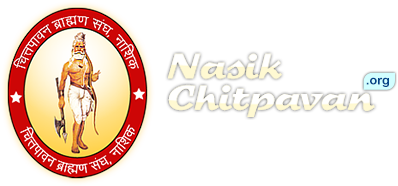 Brief History of Chitpavans
Brief History of Chitpavans
The Chitpavan or Chitpawan or Chittapawan, also known as Konkanastha Brahmins (KoBra) are a SmartaBrahmin community of Konkan, the coastal region of western Maharashtra in India. Also, in Karnataka you will find most of the Chitpavans reside in coastal parts of western Karnataka. Though some of them speak kannada, most of the old people are still speaking Chitpavani langauage which is considered as the original language of all Kokanastha Brahman community.
The historical origins of the Chitpavan community are explained in Hindu scriptures by referring to the tale of Lord Parshuram in the Sahyadrikhanda of the Skanda Purana. However, the recorded history of the Chitpavans begins in the 18th century. The Chitpavans gained prominence in the Marathi-speaking region when Chhatrapati Shivaji Maharaj's grandson Chhatrapati Shahu Maharaj appointed a Chitpavan Brahmin Balaji Vishwanath Bhat as the fifth Peshwa (prime minister). During the reign of the successive Peshwas, some of whom enjoyed status as de facto head of the Maratha confederacy, the Chitpavans settled in various provinces under the Peshwa rule. The Chitpavans established themselves firmly in the social hierarchy of the Marathi-speaking region, and played a prominent role in the political history of India. The community remains concentrated in Maharashtra but also has populations all over India and the rest of the world including the USA and UK.
Origin
There are multiple theories about the etymology of the word Chitpavan:
- The word means "pure from pyre" and is derived from the Sanskrit words Chita ("pyre") and Pavan ("pure")
- The word means "pure-hearted" and is derived from the Sanskrit words Chitta ("heart") and Pavan ("pure")
Origin reference from Skanda Purana
The earliest reference to the Chitpavan is found in one version of the Sahyadrikhanda which is a section of the Skanda Purana
The legends from the later versions of Sahayadrikhanda mention that Parshuram, defiled by the slaughter of Kshatriyas, needed Brahmins who could perform Vedic ceremonies for him. So, he recovered a narrow strip of land from sea (now called Konkan). He resuscitated Brahmins from the fourteen corpses washed ashore the Sahayadri foothills after shipwreck. The corpses were purified on a funeral pyre before being restored to life, due to which the Brahmins received the name Chitapavan ("pure from pyre"). The above legend probably suggests that the ancestors of Chitapavan Brahmins came to Konkan by the sea.] The Chitpavan are classified among the Pancha Dravida Brahmins. It is said that the fourteen Deshastha Brahmins of different gotras accompanied Parshuram to Konkan and settled at Chitpolan (modern Chiplun). Their descendants came to be known as Chitpols or Chitpavans.
Language
Most of the Chitpavan Brahmins in Maharashtra have adopted Marathi as their language. Till the 1940s, most of the Chitpavans in Konkan spoke a language called Chitpavani Konkani in their homes. BORI records Chitpavani as a fast disappearing language in 1941. There are no inherently nasalized vowels in standard Marathi whereas the Chitpavani dialect of Marathi does have nasalized vowels.
Society
The Chitpavan Brahmins have two sub-groups: the Rigvedi Konkanastha and the Yajurvedi Konkanastha. They belong to the Smartha Sect. The community comprises fourteen gotras (clans) which as one of the regulators of marriage the gotras are linked with sains and sages. The gotras are Atri, Kapi, Kashyap, Koundinya, Gargya, Kaushik, Jamadagni, Nityundana, Bhargava, Bharadwaj, Vatsya, Vashistha, Vishnuvruddha and Shandilya. All the fourteen gotras are clustered into seven groups which are known as the gana. A gotra belonging to a particular gana cannot be considered for marriage with another gotra of same gana. The gana are as follows:- Atri-Kapi, Gargya-Bhardwaj, Koundiya-Vashistha, Kashyap-Shandilya, Kaushik-Bhargava, Jamadagni-Vatsa, Nityundana-Vishnuvruddha. Besides gotra and gana, konkanastha brahmins observe the Tri (three) and Panch (Five) Pravara system. Chitpavans also revere deities connected with gotras known as the devakas and each family worships it's devaka at the time of marriage, while individuals with the same devaka can marry. There are four hundred and forty surnames amongst Konkanastha Brahmins.
* Source of this article - Wikipedia ( All due credits goes to its original author)







